

Damion Smy
Ford Ranger-sized EV ute must prove itself in US before global rollout
44 Minutes Ago
Which of these high-riding heroes is a better alternative to the mid-sized SUVs that are shooting up the sales charts?

Contributor
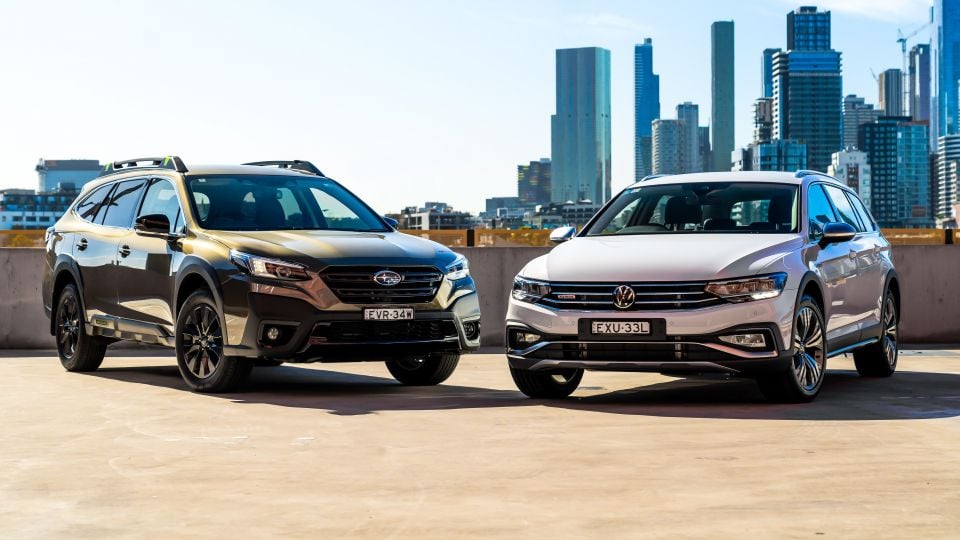

Contributor
If you want a big, comfortable family car capable of taking on a few basic fire trails, you need an SUV right? This pair begs to differ.
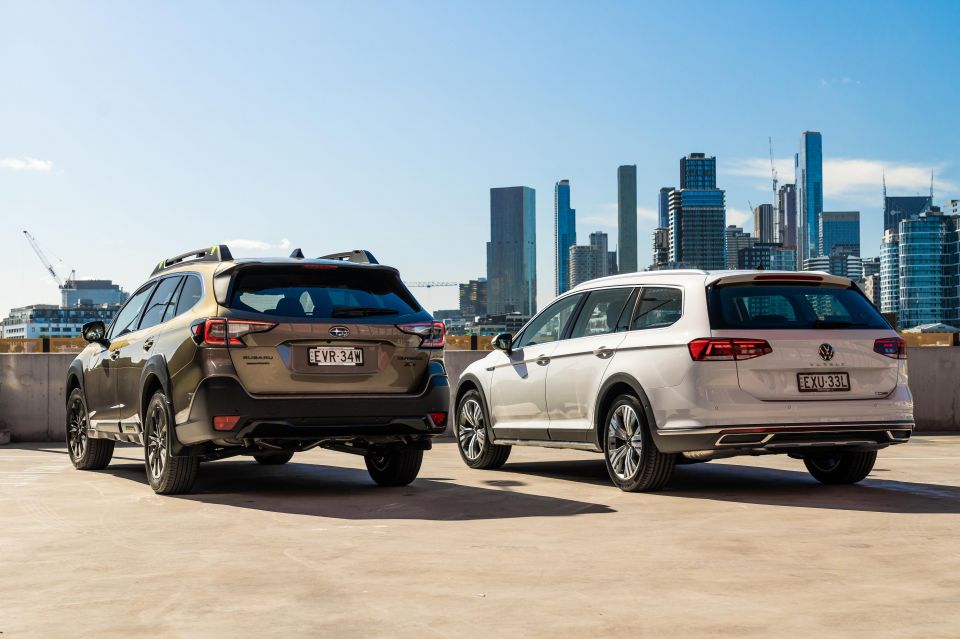
The Subaru Outback is a staple in Australia. With lots of space inside, rugged looks, all-wheel drive, and enough ground clearance to scrape you into most camp sites, its formula is well known by now. And despite what Subaru says, it isn’t an SUV – it’s a wagon.
It’s also finally available with a turbocharged engine. For all its strengths, the current Outback has always felt under-gunned under the bonnet – something Subaru has addressed with the introduction of the XT on test here.
All of a sudden, it packs enough power and torque to square up with the Volkswagen Passat Alltrack.
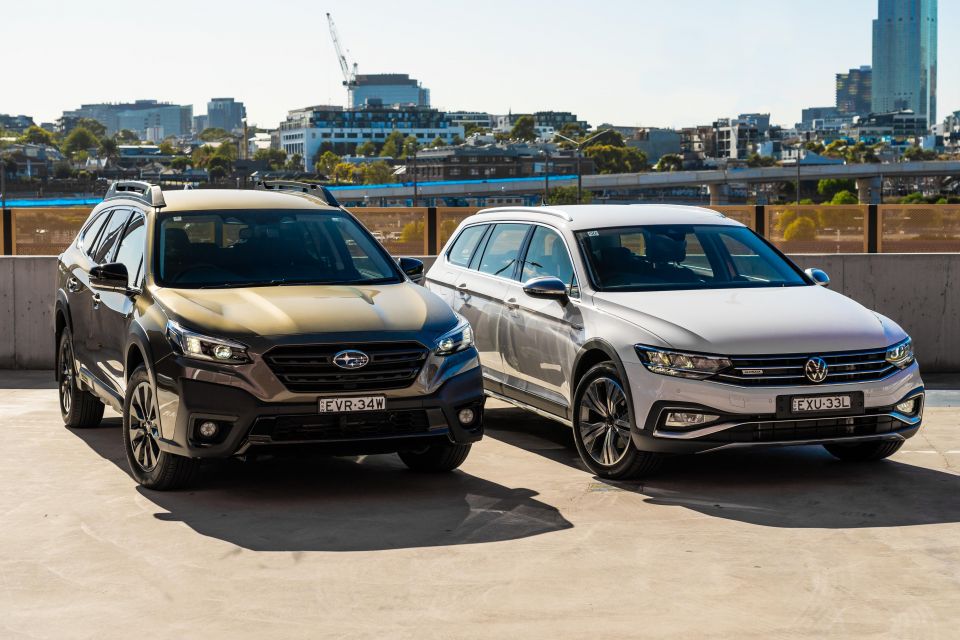
Like the Subaru, the Passat features a raised ride and tougher looks than a conventional wagon, combined with all-wheel drive for when the going gets rough. It also has a price tag within touching distance of the Outback.
These two rugged wagons are clearly cut from the same cloth, but one squeezes more in for its price than the other. Let’s find out which…
Outback
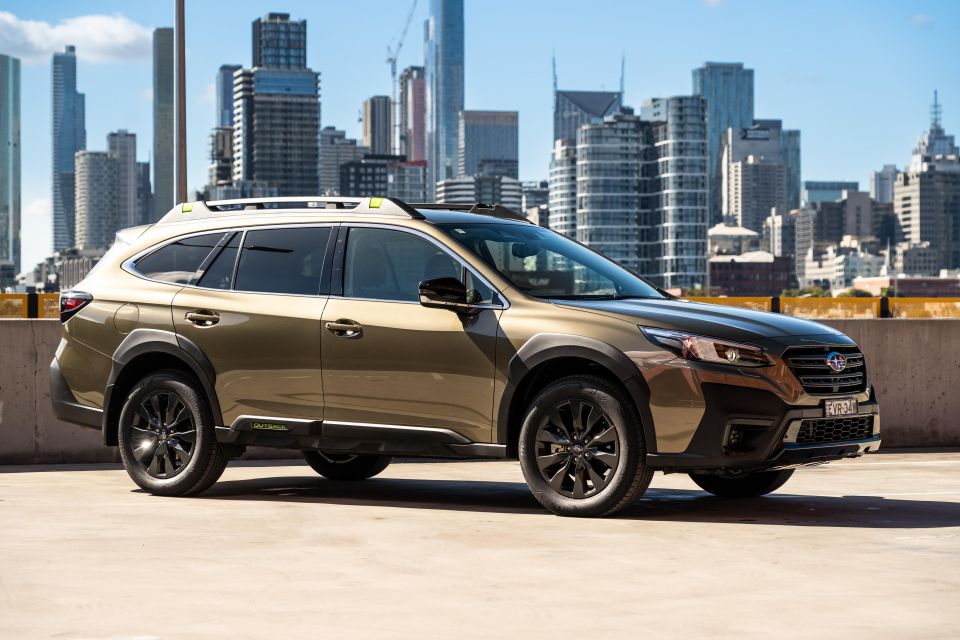
The Outback XT carries a $5000 premium over the equivalent naturally-aspirated model, meaning the Sport XT on test here has a sticker price of $52,190 before on-road costs.
Although there’s a model below the Sport in the naturally-aspirated line-up, this mid-range model is the cheapest available with turbo power.
Passat

The Passat Alltrack is the cheaper of the two cars on test here, with a sticker price of $50,790 before on-road costs.
The car on test here is the entry-level model. It’s significantly cheaper than the Premium, which retails for $62,790 before on-road costs.
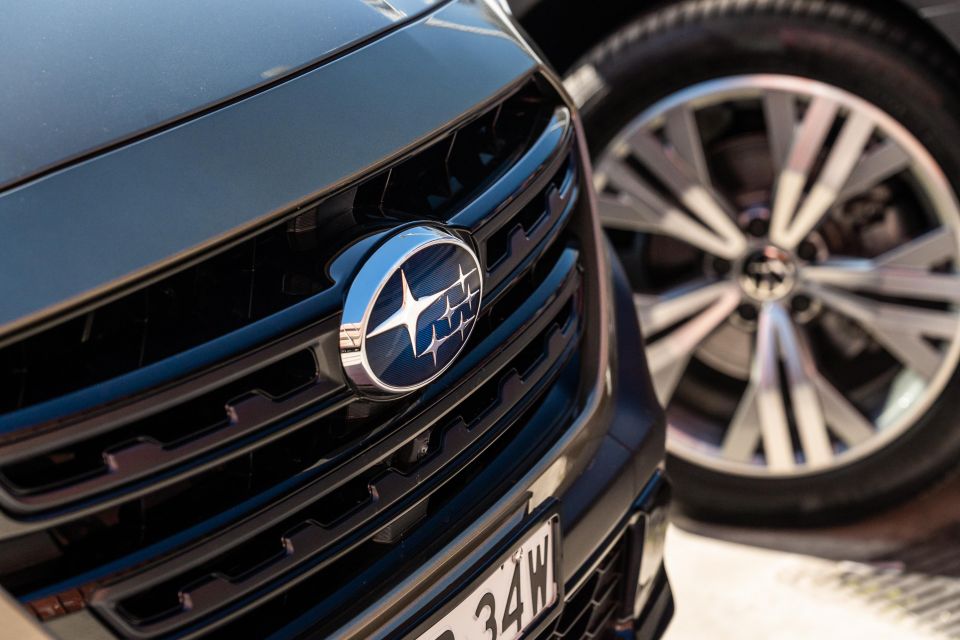
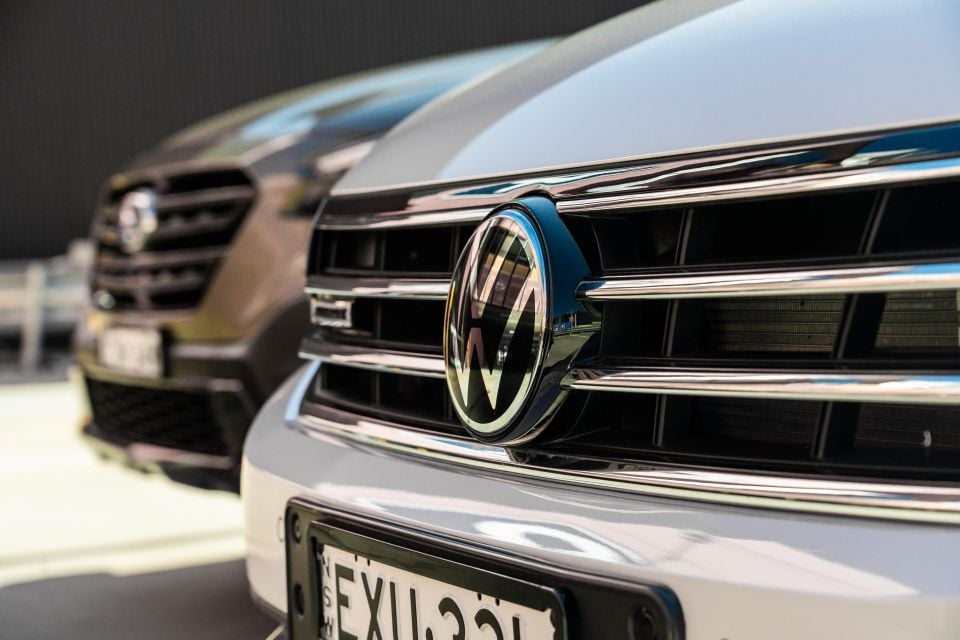
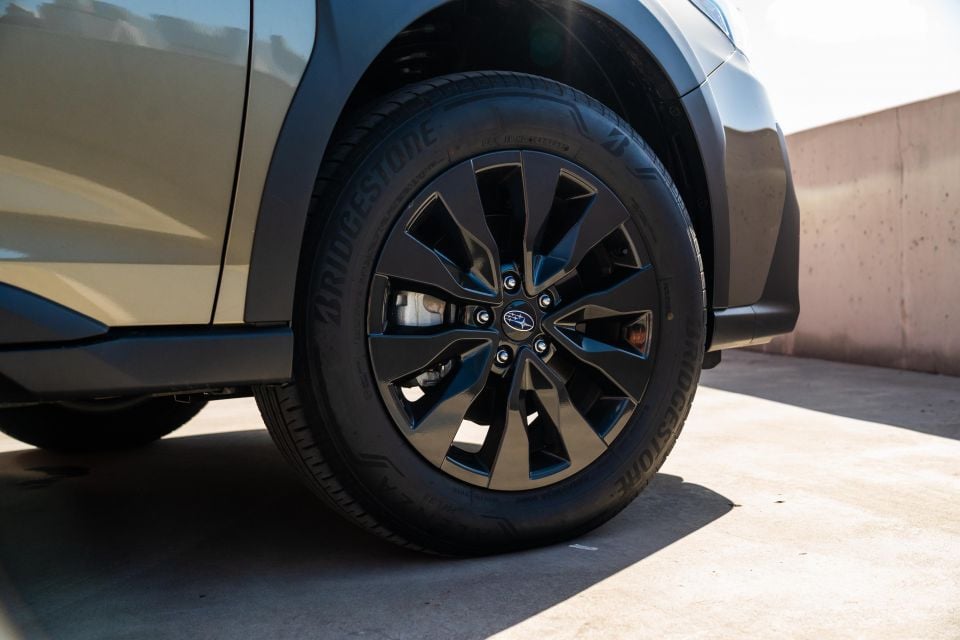
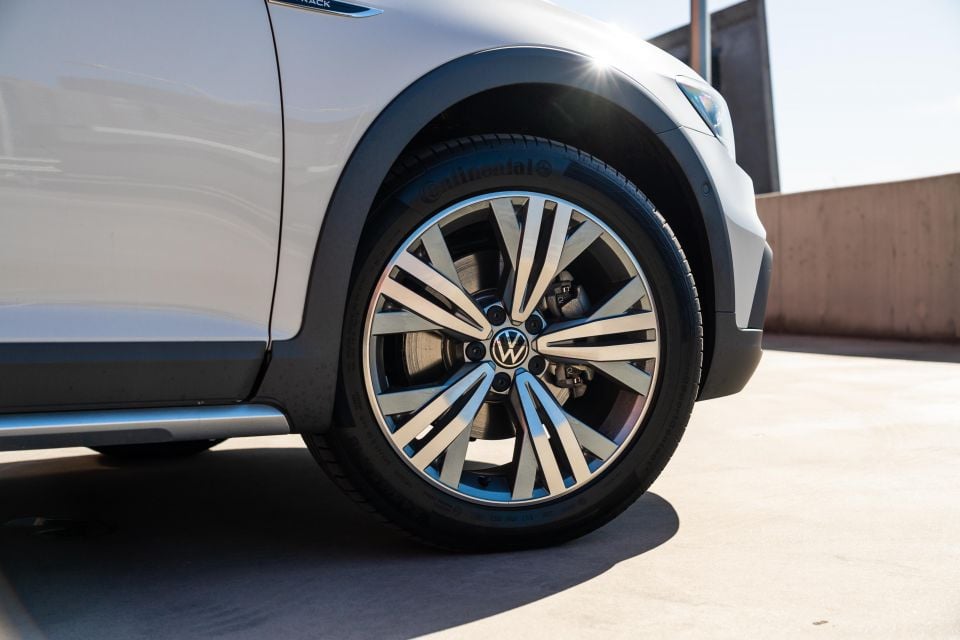
Standard equipment on both models includes:
Outback highlights:
Passat Alltrack highlights:
Outback
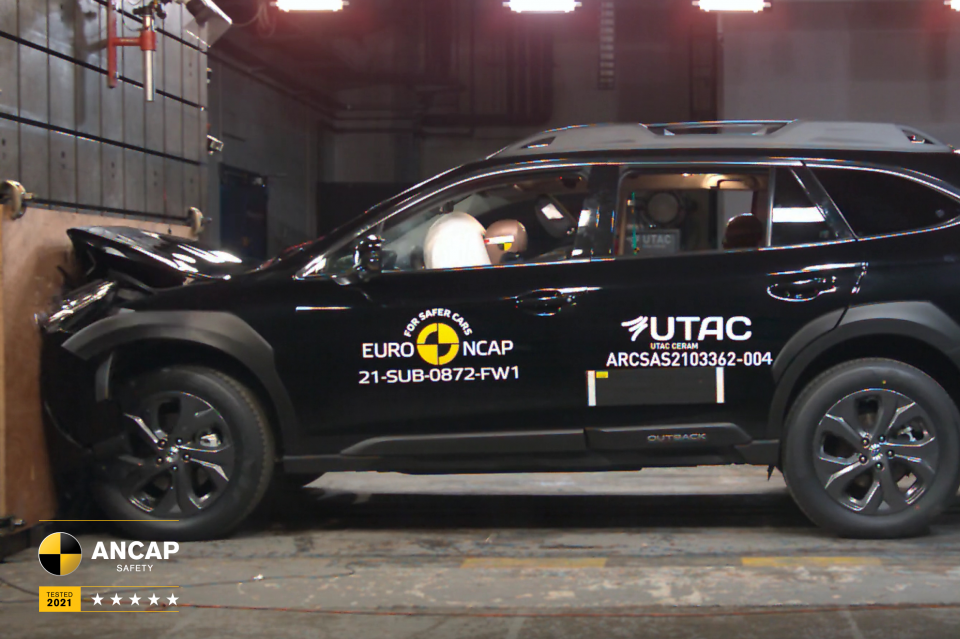
The Subaru Outback has a five-star ANCAP safety rating based on testing conducted in 2021.
It received an adult occupant protection score of 88 per cent, a child occupant protection score of 91 per cent, a vulnerable road user protection score of 84 per cent, and a safety assist score of 96 per cent.
The Outback has eight airbags.
Passat
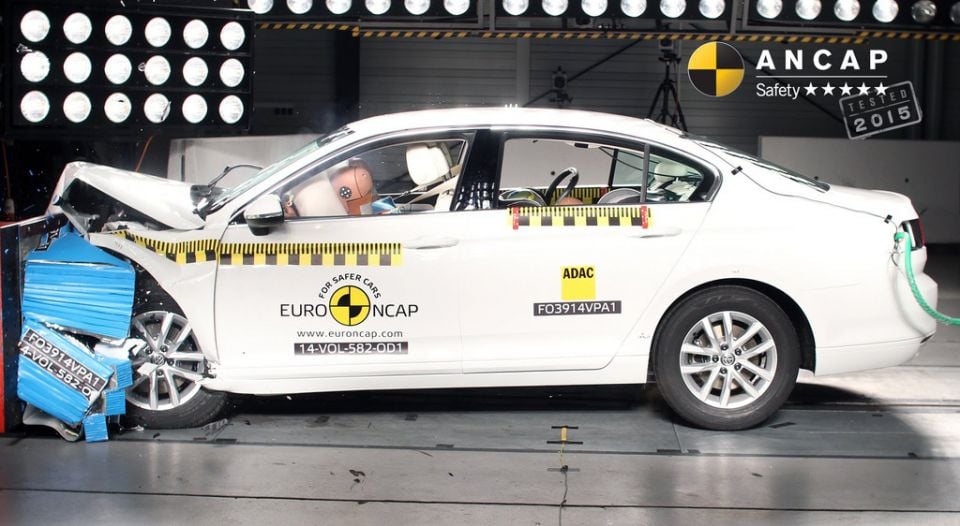
The Passat no longer has an active ANCAP safety rating. It had a five-star rating based on testing carried out in 2015, but it expired on January 1 this year.
When it was tested by Euro NCAP, it received an overall score of 35.89 out of 37.
The Passat has nine airbags.
Standard safety equipment common to both cars includes:
The Subaru also features traffic sign recognition as standard.
Outback
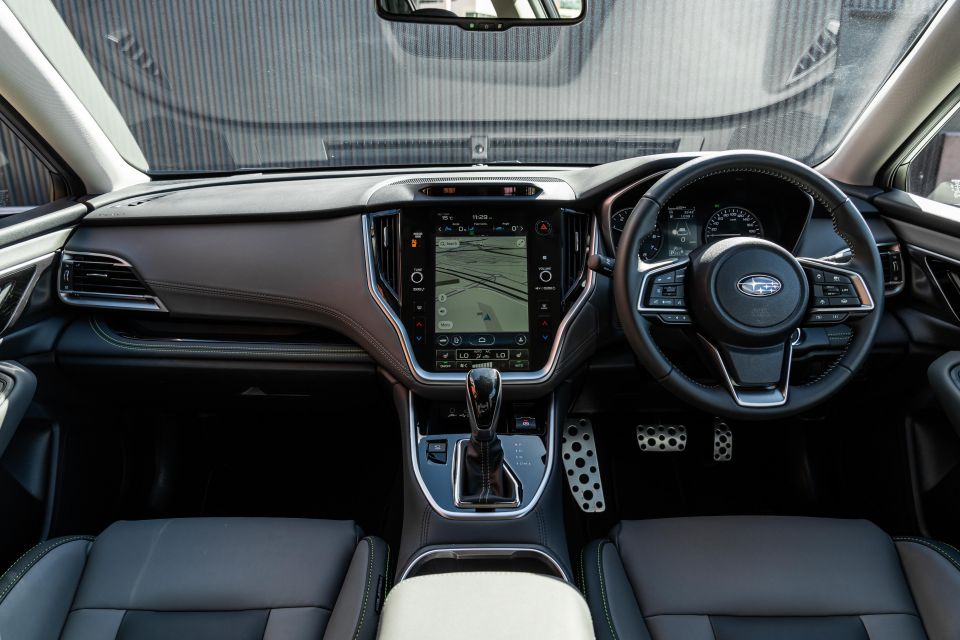
It’s hard to look past that massive screen dominating the dashboard. It’s not quite Tesla big but it’s not far off, and it instantly makes the Outback feel more modern than the Passat from behind the wheel.
The basics are all excellent. The front seats are cushy armchairs with plenty of adjustment, and the steering wheel is a chunky leather-wrapped unit that feels meaty in your hands. Vision is excellent in every direction, making this an easy car to place in the city despite its size.
Subaru dialled back the buttons with the reveal of the latest Outback, with the vertically-oriented touchscreen eating up the climate controls and trip computer the brand has traditionally situated atop the dashboard.

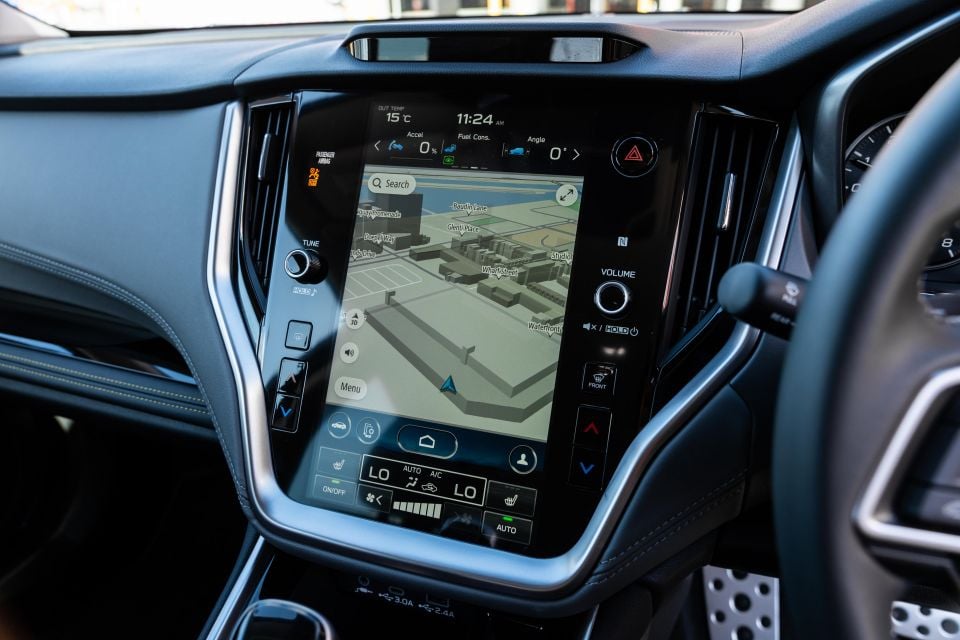

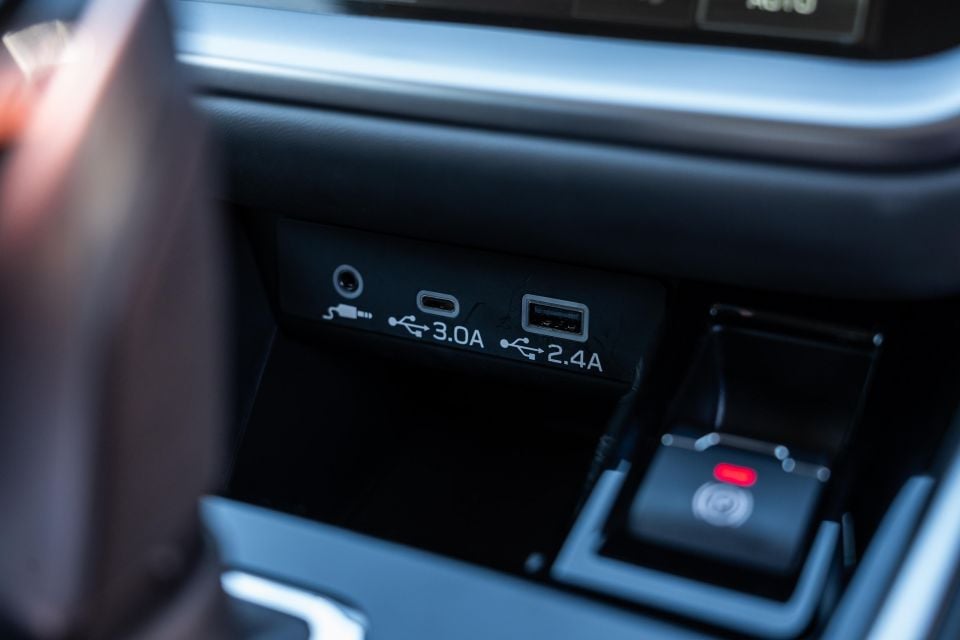
With sharp graphics and smooth responses, it looks and feels properly modern. There are prominent shortcuts for commonly-used functions like fan speed, and the physical controls for the volume and temperature are a welcome touch.
Even better are some of the changes Subaru has made as part of its recent update. Wireless Apple CarPlay now features as standard, and one of the USB-A ports has been subbed for a faster, more modern USB-C charging port.
Unfortunately, Subaru still forces you to dive through menus to active the automatic brake hold and to deactivate the driver monitoring system… every single time you start the car. You’re able to create big shortcuts for each function on the home menu, but that’s not as useful as having them just stay on or off.
There’s a slot beneath the dashboard that’s well shaped for a modern iPhone or Android phone, albeit without the wireless charge pad that now features on most rivals, but not on the Alltrack.
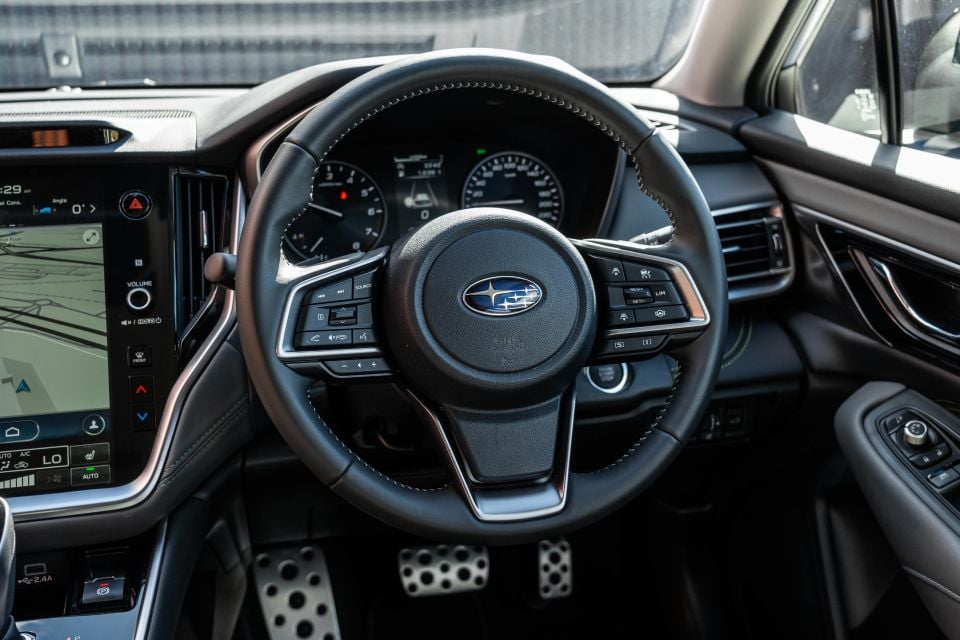
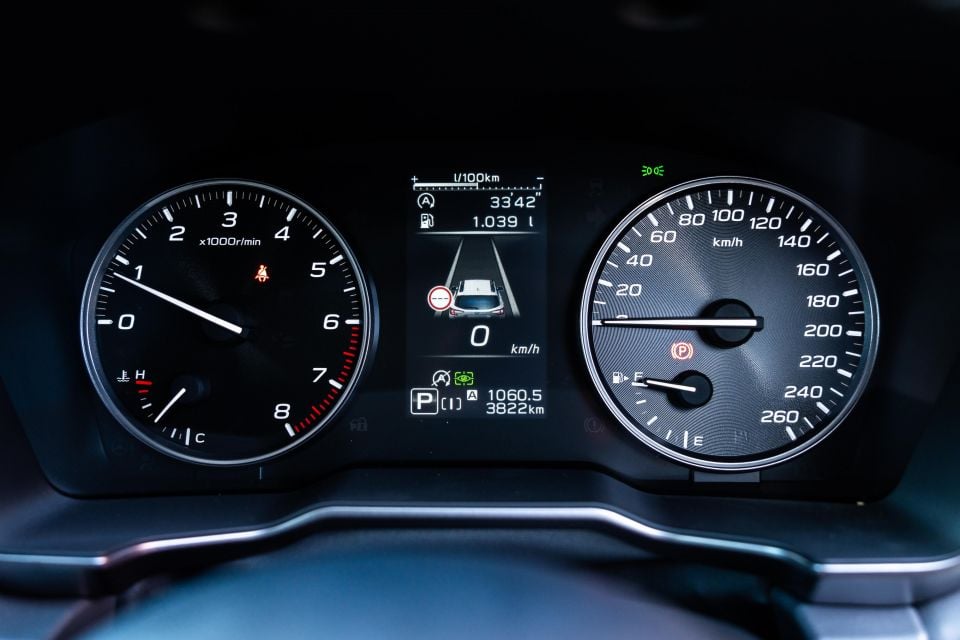
You get deep cupholders – too deep for a small latte – and a spacious two-tiered bin beneath the padded central armrest. There’s even a little slot ahead of the passenger, so road trip snackers won’t struggle to find places to stash their chocolate.
If there’s a complaint, it’s that Subaru is throwing too much information at you. Between the touchscreen, the trip computer atop the touchscreen, and the compact screen between the dials, there’s a lot of numbers on show at any one time, all of them in the same slightly hard-to-read font. The ability to pare it all back would be welcome.
The Volkswagen is very simple behind the wheel, but it’s also much easier to make out key information on the move.
At least Subaru has tidied up its wheel, which before its most recent update had way too many buttons, toggles, and paddles. The new unit still has plenty going on, but is far more user friendly in its layout.

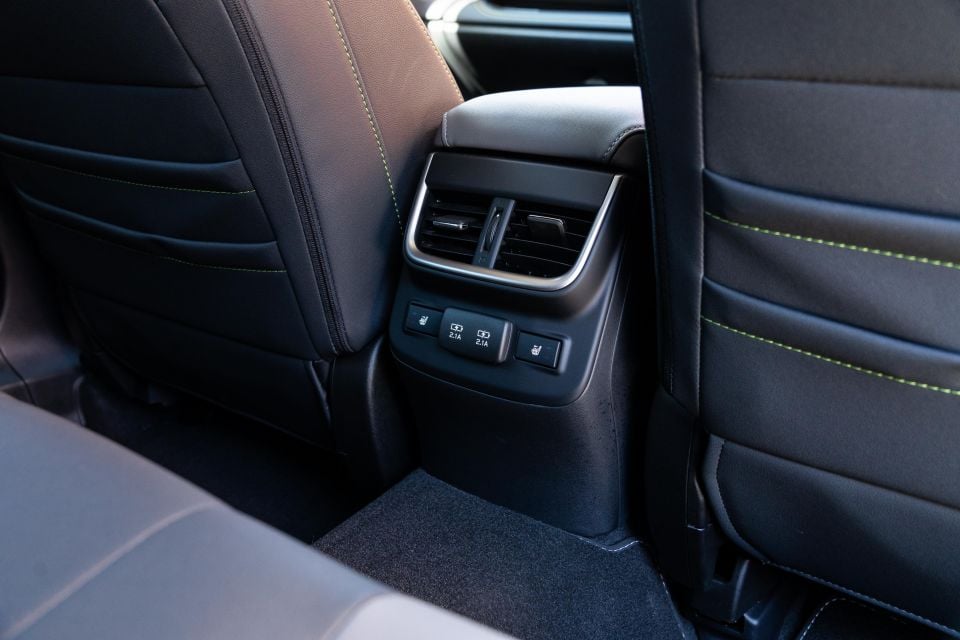
Rear seat space is impressive, proving once again you don’t need an SUV to lug your family around in comfort.
Legroom and headroom are excellent, and the bench itself is supportive and well-padded. With tall windows and a classic wagon window line there’s plenty of light back there, and the fold-down armrest, USB-A chargers, heated outboard seats, and air vents will keep children happy.
It has slightly more legroom than the Passat, but there’s not as much of a difference as you might expect given how much newer the Subaru is.
There are ISOFIX points on the outboard rear seats, and three top-tether points. The rear bench folds 60/40, and can be lowered using handles in the boot or on the rear seats themselves.
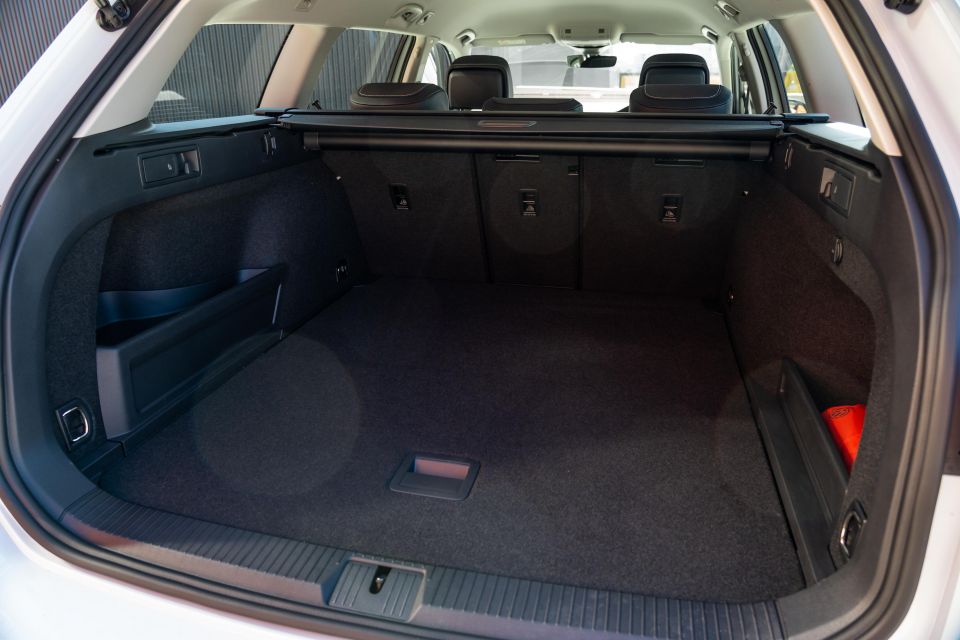
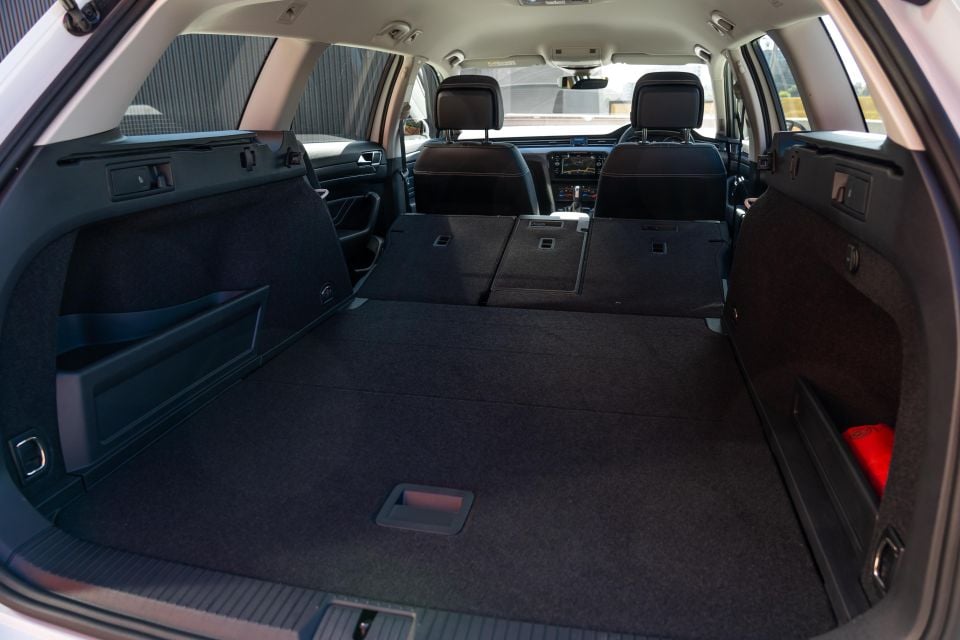
Although folding them frees up a massive, flat load space, it’s annoying Subaru still mounts the middle seatbelt in the roof, and the lack of a ski port or central passthrough is an oversight on a car designed with practicality in mind. The boot itself is massive (522L/1267L), with handy touches like netted pockets and fold-down grocery hooks.
Subaru also has fitted a luggage blind that can be slid higher without actually needing to remove it entirely, which makes it easier to get items out from beneath it.
There’s a full-sized spare wheel beneath the floor.
Passat
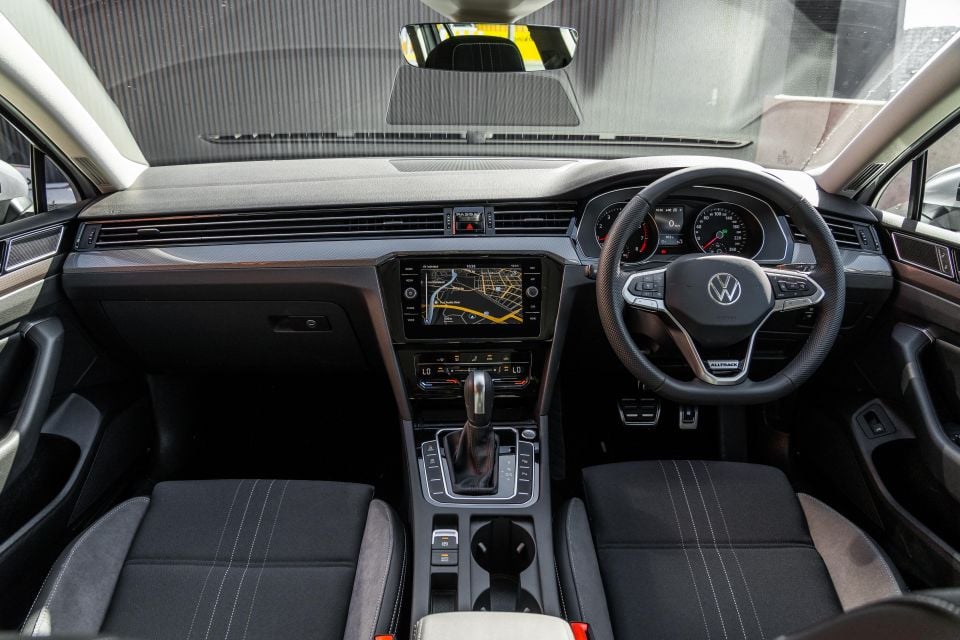
Where expert car reviews meet expert car buying – CarExpert gives you trusted advice, personalised service and real savings on your next new car.
There’s a noticeable step down in luxury hopping between the Outback and Passat. Although you can get an Alltrack with all the trimmings, it’s much more expensive than the pair on test here.
With cloth seat trim, analogue dials, and a pretty dour colour scheme, the Alltrack doesn’t look or feel nearly as special as its Japanese rival. That’s not to say it has nothing to offer, though.
As is usually the case with large Volkswagens, the driving position is nigh on perfect.
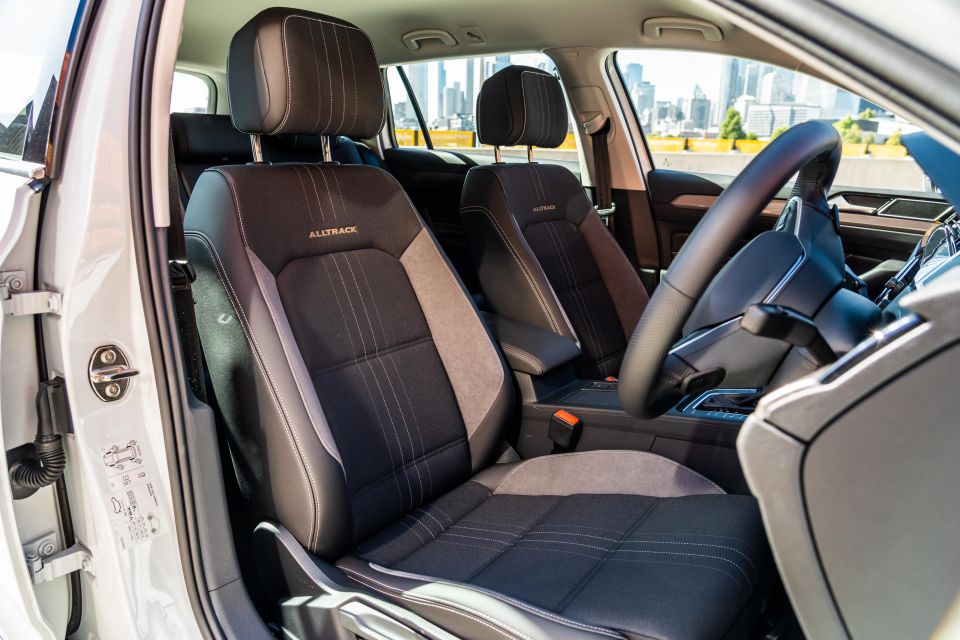
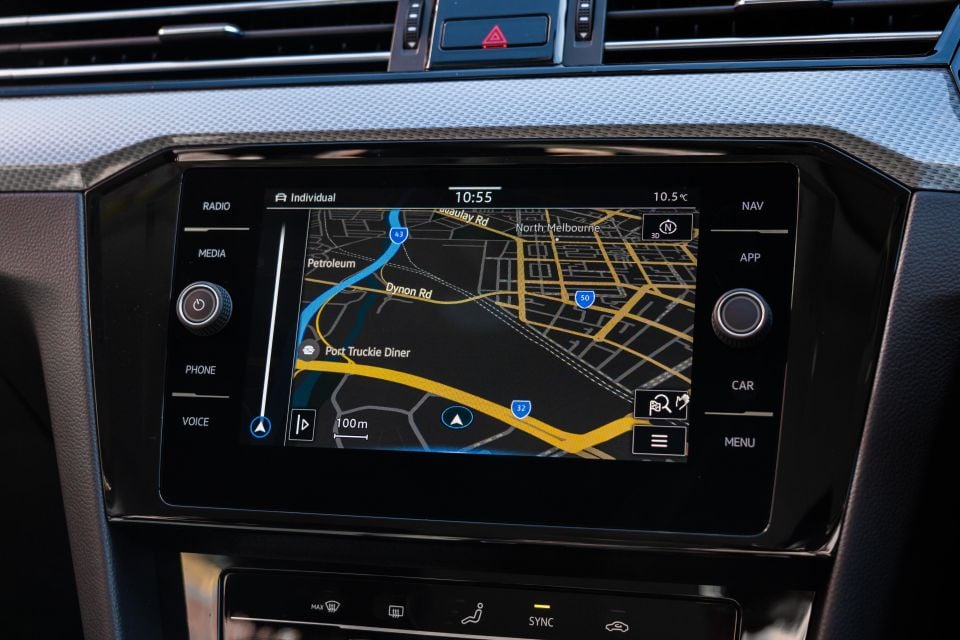
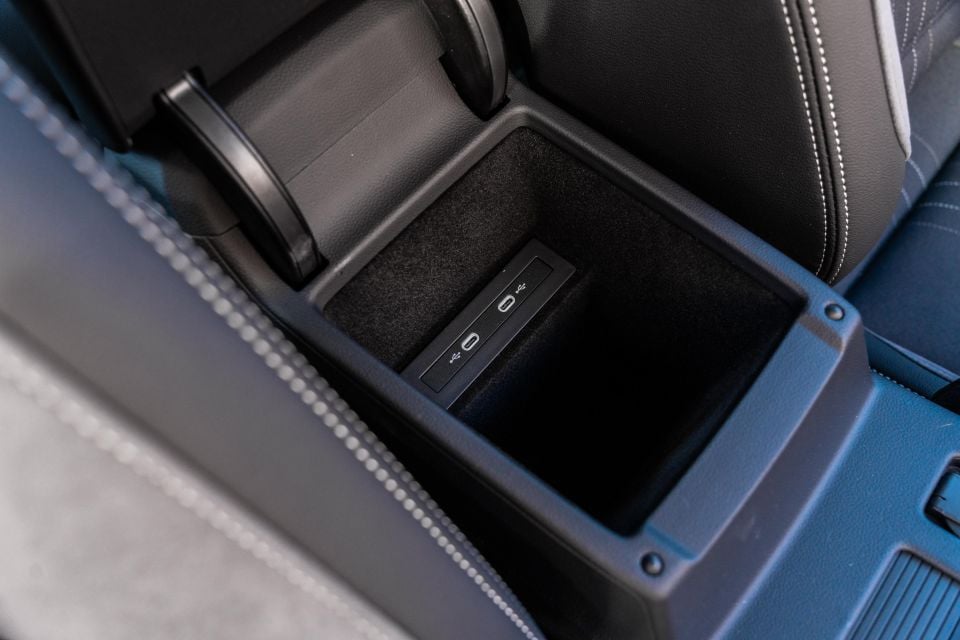
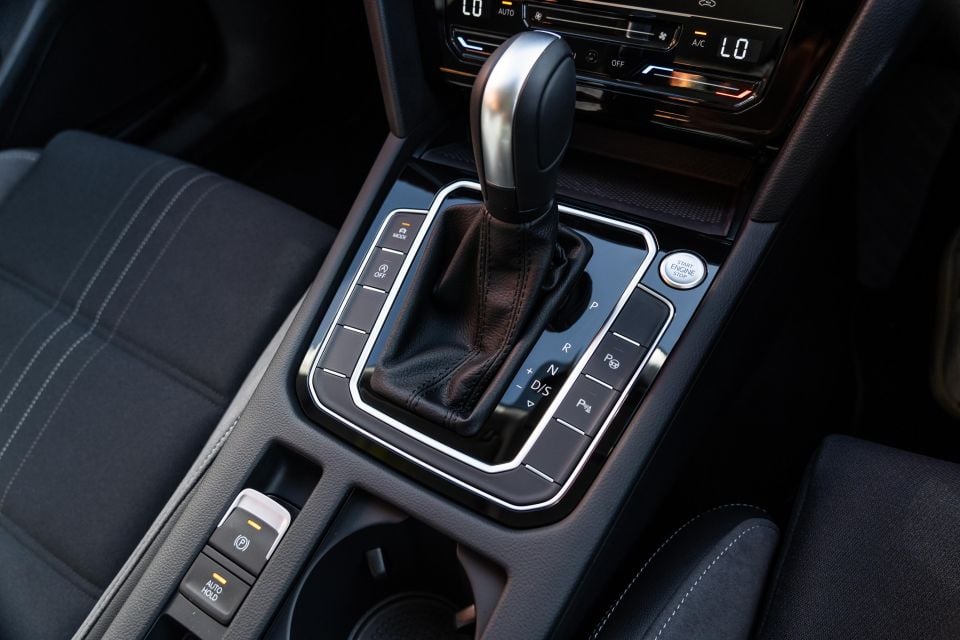
There’s plenty of (manual base, powered backrest) adjustment in the front seats, the steering wheel comes out nicely, and the pedal box is home to a footrest for both feet. No other brand does that.
There’s also quality leather on the steering wheel, while nothing squeaks or rattles. Yes, it’s getting long in the tooth, but the bones are still good.
The Outback makes the Alltrack feel its age on the technology front. The infotainment system is effective, but it looks small in its gloss black surround, and the graphics are starting to look blocky. In its defence, the inclusion of wireless Apple CarPlay allows you to use the up-to-date interface from your phone in its place without too much fuss.
Like Subaru, the Volkswagen has had its USB-A ports replaced by more modern USB-C ports capable of faster charging.
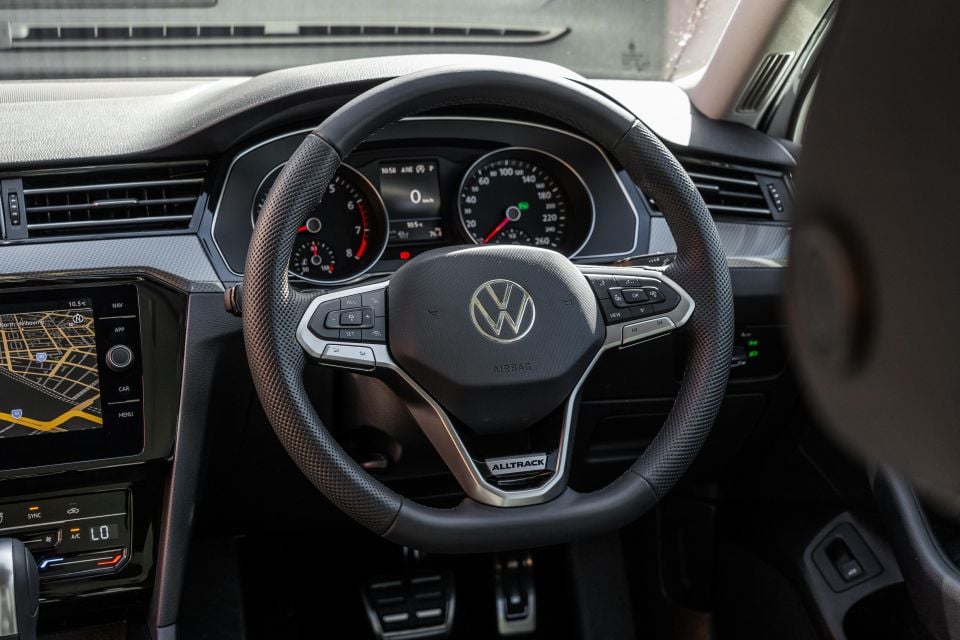
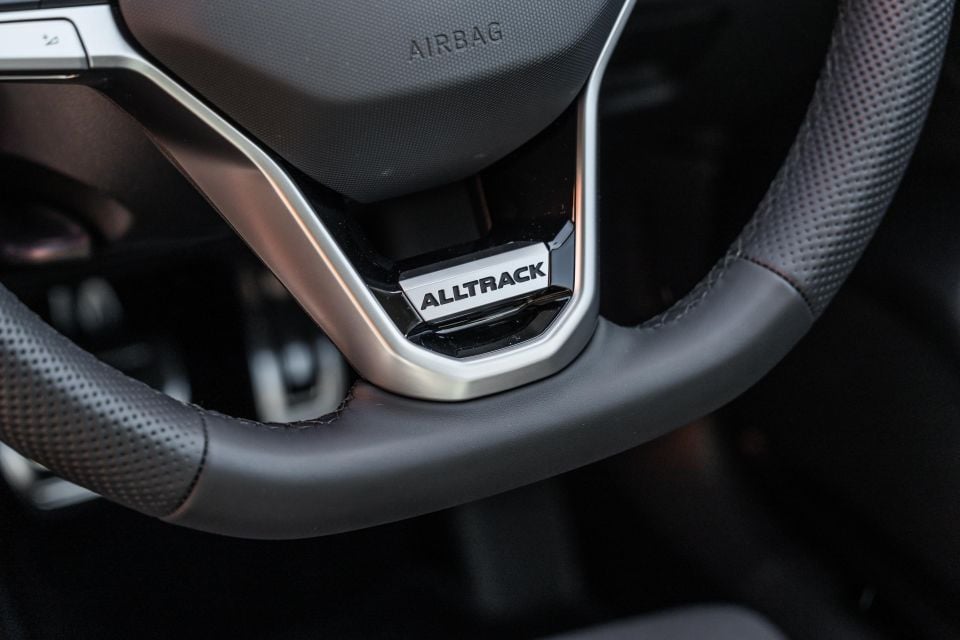
Sometimes the old ways are the best, too.
Unlike its rival, the Passat has full-time buttons for the climate functions rather than touchscreen menus, and you can toggle the drive modes and automatic start/stop using hard buttons on the transmission tunnel.
Storage space comes courtesy of cupholders on the transmission tunnel, the phone-sized cubby below the dashboard, and a decent underarm bin. The door pockets have plenty of space for bottles, too.
Rear seat space is better than in most mid-sized SUVs, and the stadium-style raised rear bench affords a great view out the front for carsick passengers. That also means taller passengers might feel like they’re perched a bit high, however.


Air vents feature back there, as do a pair of USB ports hidden in a little fold-away cubby. There’s also a fold-down central armrest with cupholders.
There are ISOFIX points on the outboard rear seats, and three top-tether points. The rear bench folds 60/40, and can be lowered using handles in the boot or on the rear seats themselves.
Claimed boot space is 650 litres with the rear seats in place, expanding to 1780L with them folded. It’s a very usable space, with pockets behind the wheel arches to hold loose items.
There’s a full-sized spare wheel beneath the boot floor.


| Outback XT | Passat Alltrack | |
|---|---|---|
| Length | 4870mm | 4780mm |
| Width | 1875mm | 1853mm |
| Height | 1675mm | 1530mm |
| Wheelbase | 2745mm | 2791mm |
| Boot space | 522L | 650L |
Outback
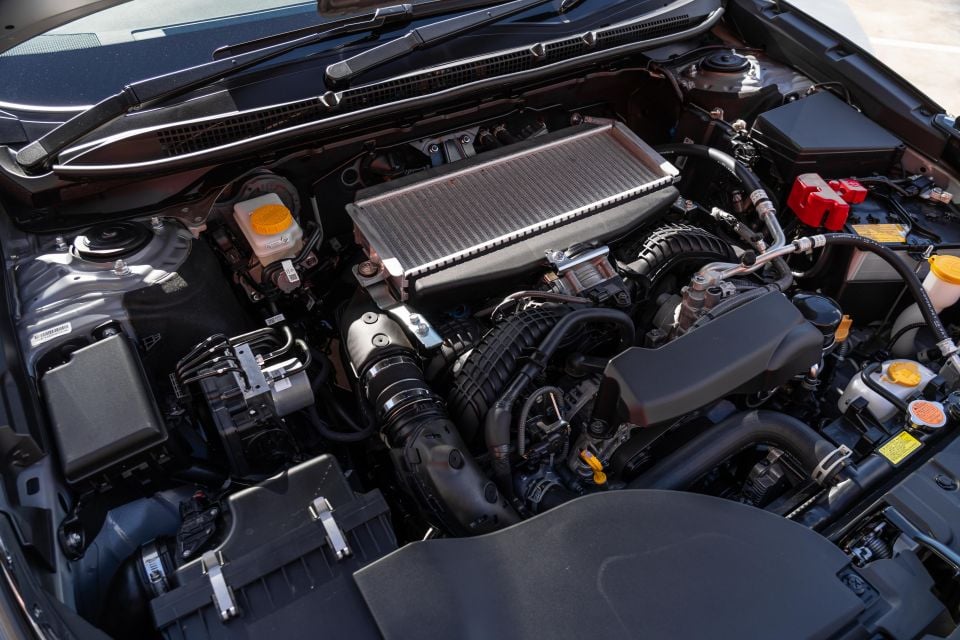
Power in the Outback XT comes from a 2.4-litre turbocharged horizontally-opposed four-cylinder petrol engine, pumping out 183kW of power and 350Nm of torque.
It’s mated to a continuously-variable transmission and all-wheel drive.
Claimed fuel consumption is 9.0 litres per 100km on the combined cycle; we saw 8.9 litres per 100km on our combined loop.
The car drinks regular 95 RON unleaded petrol, and has a 63-litre fuel tank.
Passat
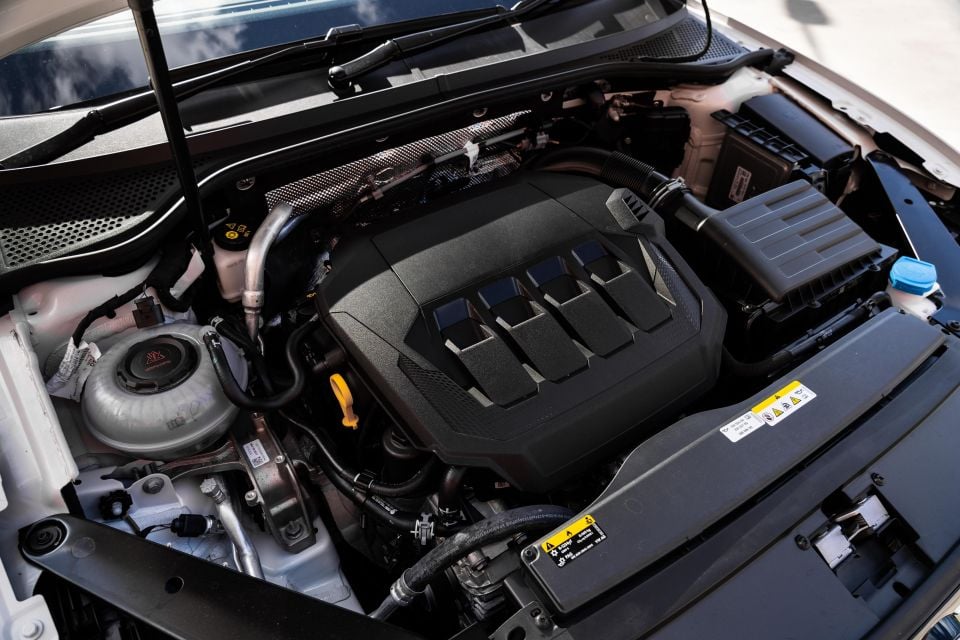
Power in the Passat Alltrack comes from a 2.0-litre turbocharged four-cylinder petrol engine, making 162kW of power and 350Nm of torque.
It’s mated to a seven-speed dual-clutch transmission and all-wheel drive.
Claimed fuel economy is 8.1 litres per 100km on the combined cycle; we saw 8.0 litres per 100km on our combined loop.
The car drinks 95 RON premium unleaded petrol, and has a 66-litre fuel tank.
| Outback XT | Passat Alltrack | |
|---|---|---|
| Displacement | 2.4L turbo | 2.0L turbo |
| Power | 183kW | 162kW |
| Torque | 350Nm | 350Nm |
| Consumption(claim) | 9.0L/100km | 8.1L/100km |
| Consumption (as tested) | 8.9L/100km | 8.0L/100km |
| Fuel type | 95 RON | 95 RON |
| Tare weight | 1703kg | 1681kg |
| Towing | 750/2400kg | 750/2200kg |
| Ground clearance | 213mm | 173mm |
Outback
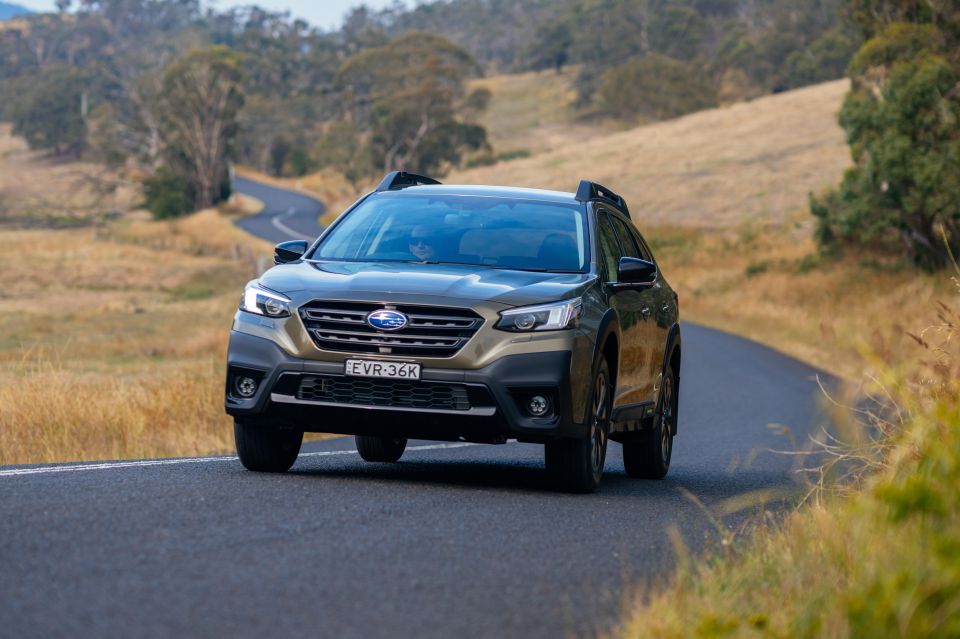
The Outback still feels every bit like a Subaru when you fire it up. It starts up with a flurry, and settles into a high idle when it’s cold, just like… every single Subaru, essentially ever. The more that changes, the more that stays the same.
We’ll get to the engine, but the fundamentals of the latest Outback are solid. The ride is good, although it can feel a bit springy over highway crests and dips.
Subaru has fitted sensible 18-inch alloy wheels wrapped in 60-profile tyres, and it’s not tried to make the Outback feel like a sports car, so the fact it rides nicely should come as no surprise.
It has plenty of suspension travel for a plush feel over highway dips and inner-city speed bumps, but the body is also well enough controlled that the car never feels like a floaty barge.
With direct steering and a solid, planted stance, you’re able to tip it confidently – if not necessarily quickly – into corners, even on greasy road surfaces. There’s a reason Subarus still sell strongly among people who take their cars to the snow, or to remote surf spots.
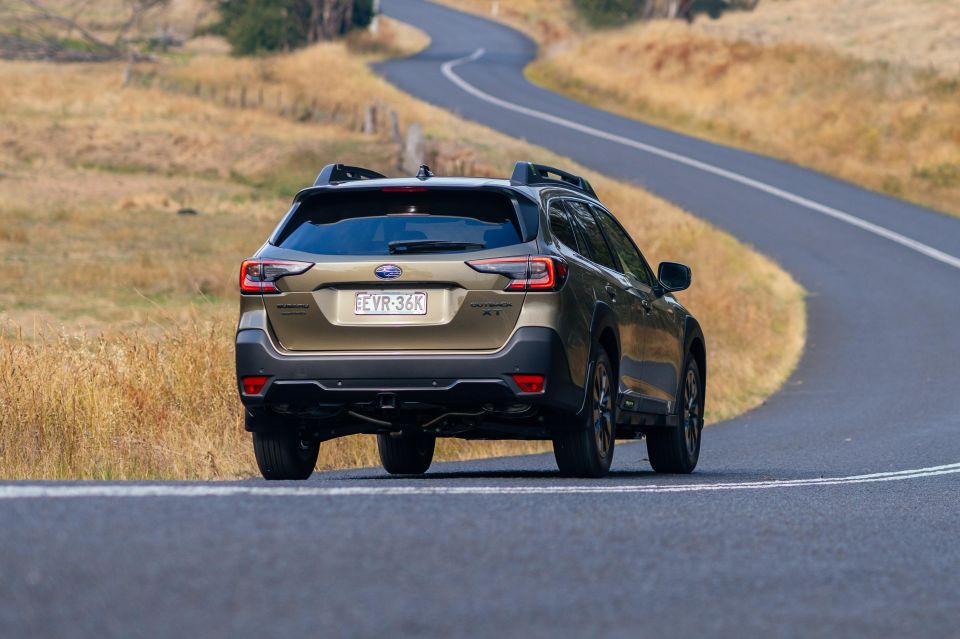
The new turbocharged XT fixes the main problem with the car, too. For so long our main complaint about the Outback was the fact it was gutless, but the new engine feels every bit as meaty as the 162TSI in its German rival.
There’s a pause low in the rev range as the turbo spools and the CVT winds up, but when you’re in the mid-range it really packs a punch. Fully loaded with people and gear, that’s a revelation in an Outback.
It’s one of the better CVTs on the market, and manages to fade into the background for the most part. It’ll occasionally pretend to be a torque converter, mimicking upshifts on medium throttle inputs and slurring through virtual ratios if you take charge with the paddles behind the steering wheel.
Compared to the DSG in the Passat, however, it just doesn’t feel all the sharp. Where the Volkswagen confidently snaps from gear-to-gear when you use the paddle shifters, the Outback slurs and groans.
Once you’ve hit the legal limit, the big Subaru settles down to a refined cruise. The engine hums silently away in the background, although there’s still a bit of tyre roar in the cabin on Australian back roads.
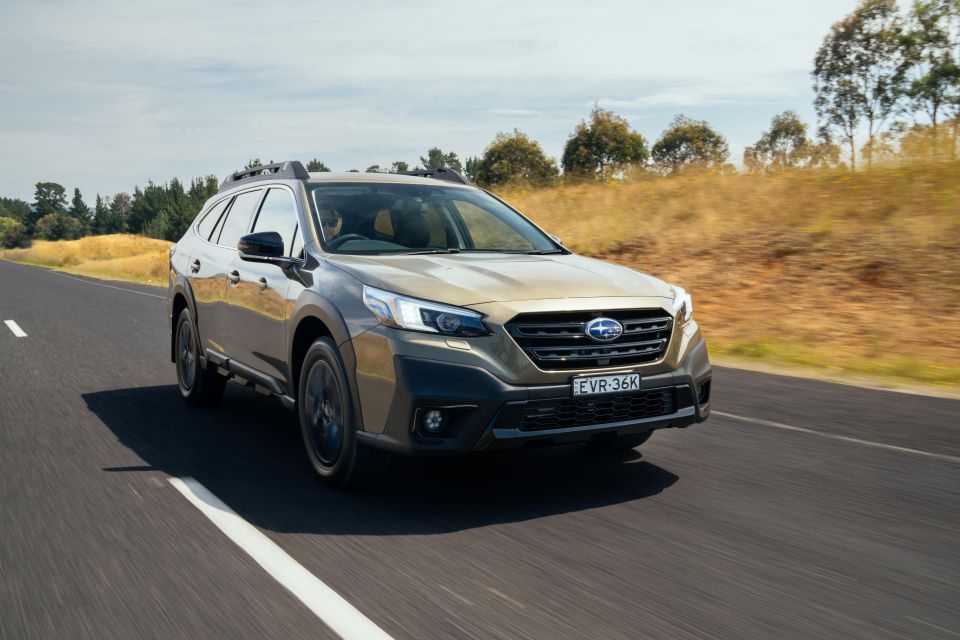
It’s more refined than the older Forester and feels similar to the Passat, so work has gone into suppressing unwanted noise and vibrations in the cabin.
The EyeSight driver assist suite has become a major Subaru selling point, and it holds up well here – save for the fact the adaptive cruise control is prone to creeping on rolling hills.
Then there’s the driver monitoring system. It’s a good idea in theory, chiming when the driver takes their eyes off the road to discourage distractions on the move, but it’s also prone to false positives. Leaning to one side of the seat? No you’re not, you’re distracted.
Turning the system off involves taking your eyes off the road to flick through touchscreen menus every time you start the car. How ironic.
A quick Google reveals plenty of owners have tried and failed to permanently disabled the system.
Passat
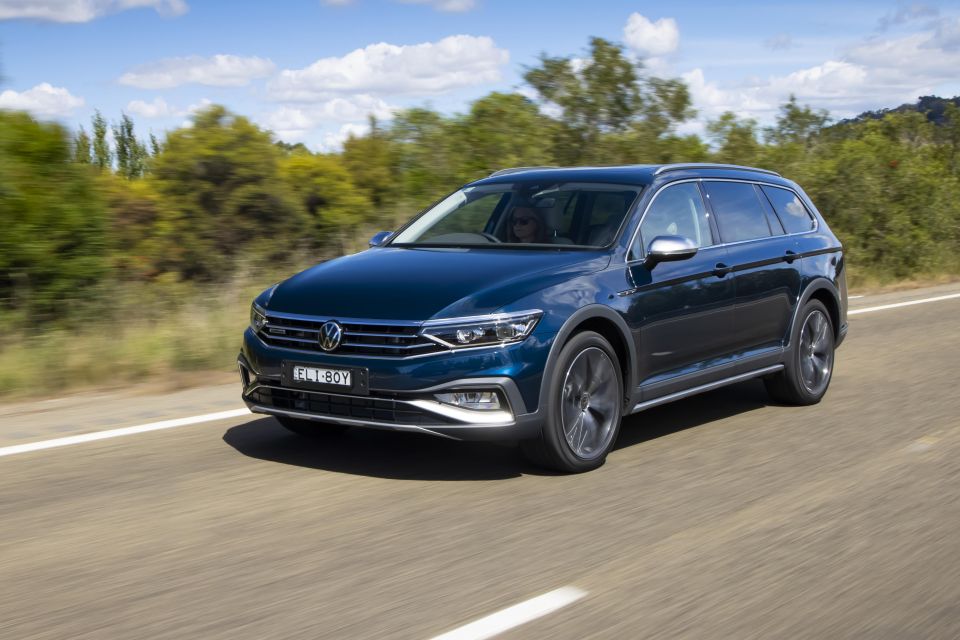
Just like the Outback feels like a Subaru through and through, the Passat feels like a Volkswagen from the second it fires.
There are no theatrics or histrionics, it just goes about its business with a degree of polish the Outback can’t match.
Ride quality is good in town, where the combination of a comfort-oriented suspension tune and sensibly-sized wheels makes the Alltrack a friendly car to commute in. It also handles big highway crests and dips without breaking a sweat, and feels lighter on its feet than the Subaru in the process.
Where the Outback occasionally feels like it’s fighting hard to control its weight at higher speeds, the Passat is always in control.
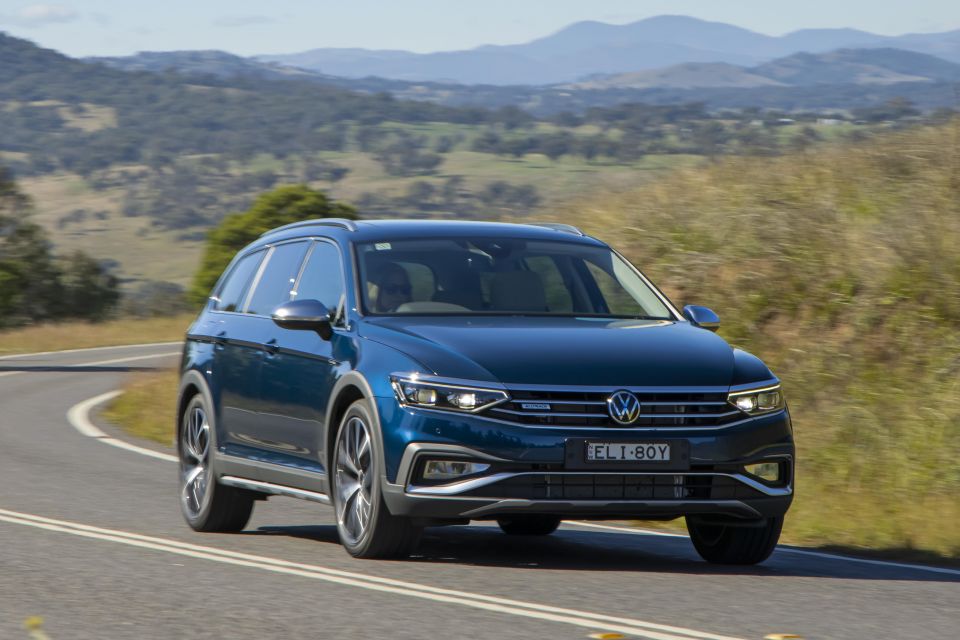
Throw in the linear, light steering and a more natural-feeling powertrain, and the Volkswagen is the pick of this pair if you enjoy driving.
Traction is also excellent from the 4Motion all-wheel drive system. On wet roads you can put your foot down and it acts quickly, shuffling torque to the rear axle rather than letting the front wheels spin.
You don’t get a Subaru-style X-Mode, nor does the Passat have the ground clearance to match the Outback, but it’ll still happily take care of gravel roads and basic fire trails.
There are no surprises when it comes to the four-cylinder engine in the Passat, versions of which feature in everything from the Golf to the Audi Q5 and Porsche Macan. It’s punchy low in the rev range, surges through the mid-range, and revs out smoothly when you’re in a hurry.

The amount of punch on tap feels very similar to the Subaru, but it’s more enjoyable to actually tap into it thanks to the engine’s smooth nature and the snappy dual-clutch transmission.
Save for a hint of hesitation off the line, the DSG makes smart decisions at low speeds, and is confident and quick when you want more performance at higher speeds.
At highway speeds, the Passat is nicely settled. It’s every bit as quiet as the Outback, and Volkswagen’s suite of driver assists are smartly calibrated.
The fact it doesn’t beep at you incessantly like the driver monitoring system in the Outback is an added bonus.
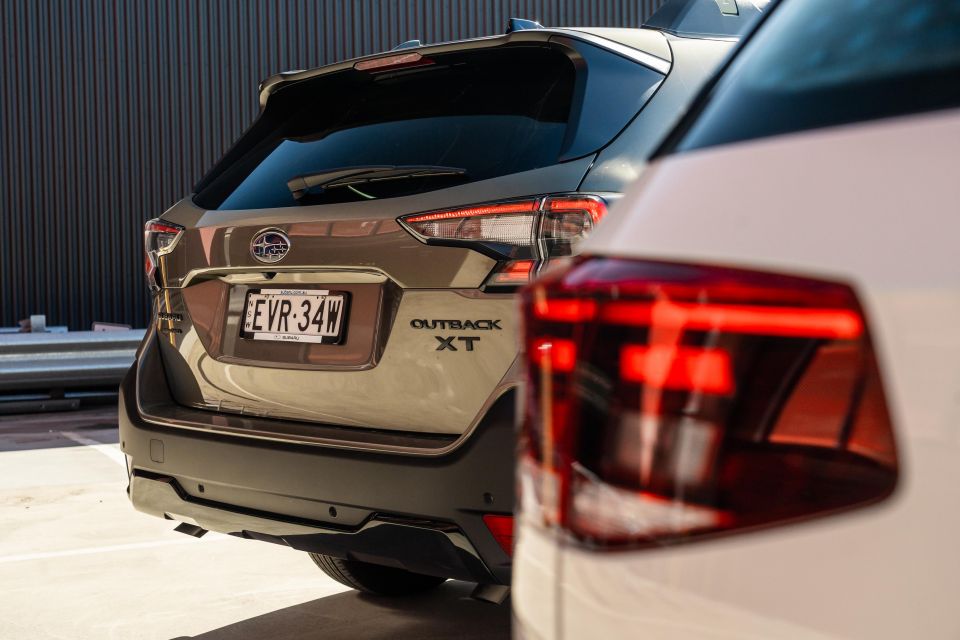
Outback
The Subaru Outback is backed by a five-year, unlimited-kilometre warranty.
Maintenance is required every 12 months or 12,500 kilometres, and five years of servicing will set you back $2579.31.
Passat
The Volkswagen Passat is also backed by a five-year, unlimited-kilometre warranty.
Maintenance is required every 12 months or 15,000 kilometres, and a five-year service plan will set you back $2900.
You don’t need that SUV.
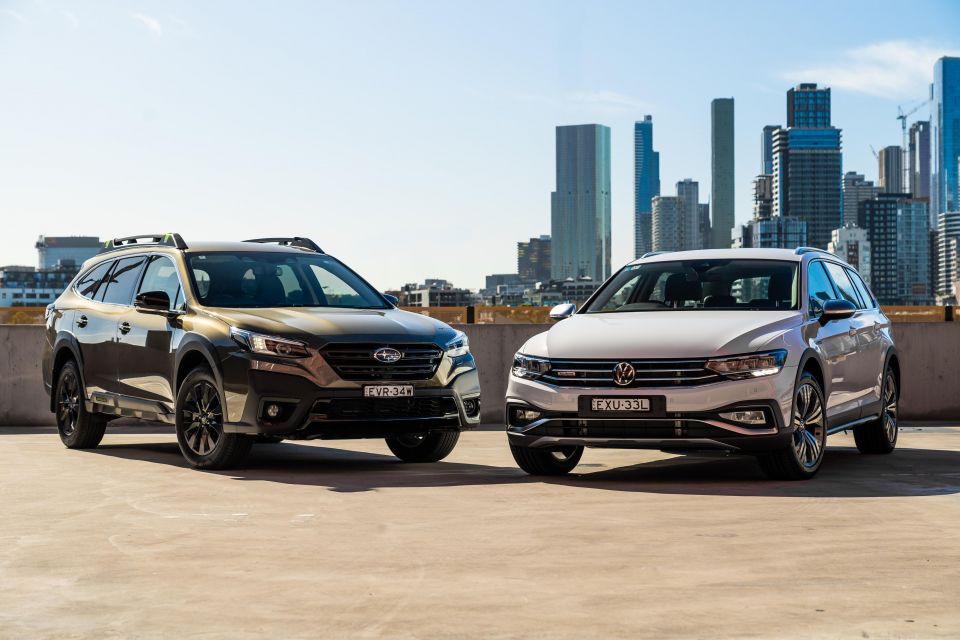
Both these cars represent excellent value, with cabin space, boot space, and capabilities more in keeping with bigger, more expensive crossovers than the mid-sized SUVs against which they’re priced.
The Subaru Outback is the instant go-to when you think of high-riding wagons, and it’s the winner of our comparison.
The addition of a turbocharged engine has addressed the car’s biggest flaw, by finally giving keener drivers – or families who like getting where they’re going without constantly feeling strained – enough punch. Beyond the engine, it’s a well priced, well equipped, practical family hauler.
As for the Alltrack? It does a lot right. It’s sharper than the Subaru to drive, and there’s an extra degree of polish to all of its technology that’ll no doubt appeal to a certain type of buyer.
But side-by-side it just doesn’t pack enough equipment in for the money to outdo its Japanese rival.
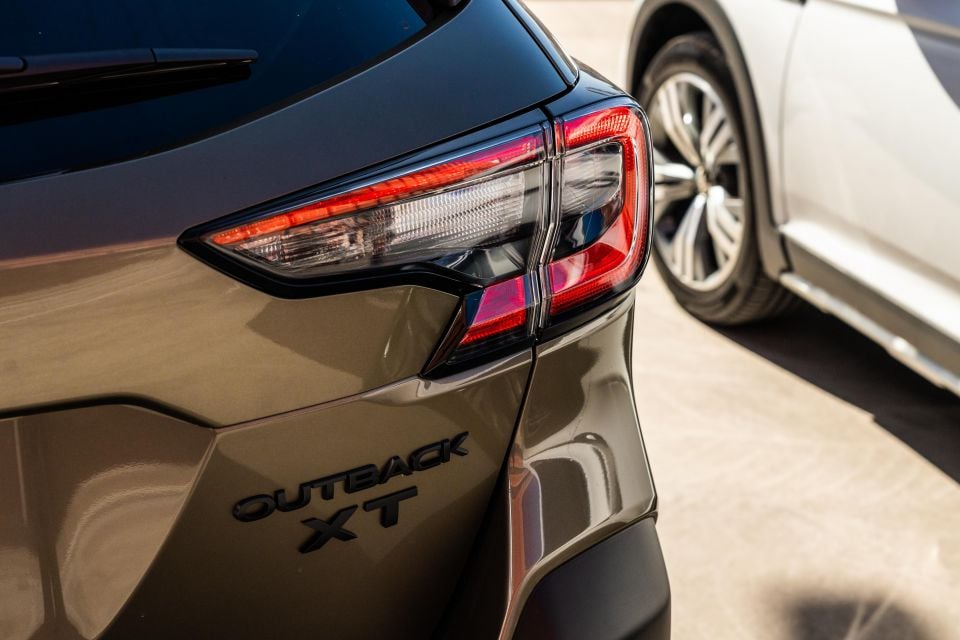
Click the images for the full gallery
MORE: Everything Subaru Outback MORE: Everything Volkswagen Passat
Share your thoughts with us in the comments below!
Scott Collie is an automotive journalist based in Melbourne, Australia. Scott studied journalism at RMIT University and, after a lifelong obsession with everything automotive, started covering the car industry shortly afterwards. He has a passion for travel, and is an avid Melbourne Demons supporter.
Share your thoughts and write a review of a car you own and get featured on CarExpert.


Damion Smy
44 Minutes Ago


Damion Smy
2 Hours Ago


Damion Smy
4 Hours Ago


William Stopford
5 Hours Ago


Matt Campbell
13 Hours Ago


Max Davies
1 Day Ago